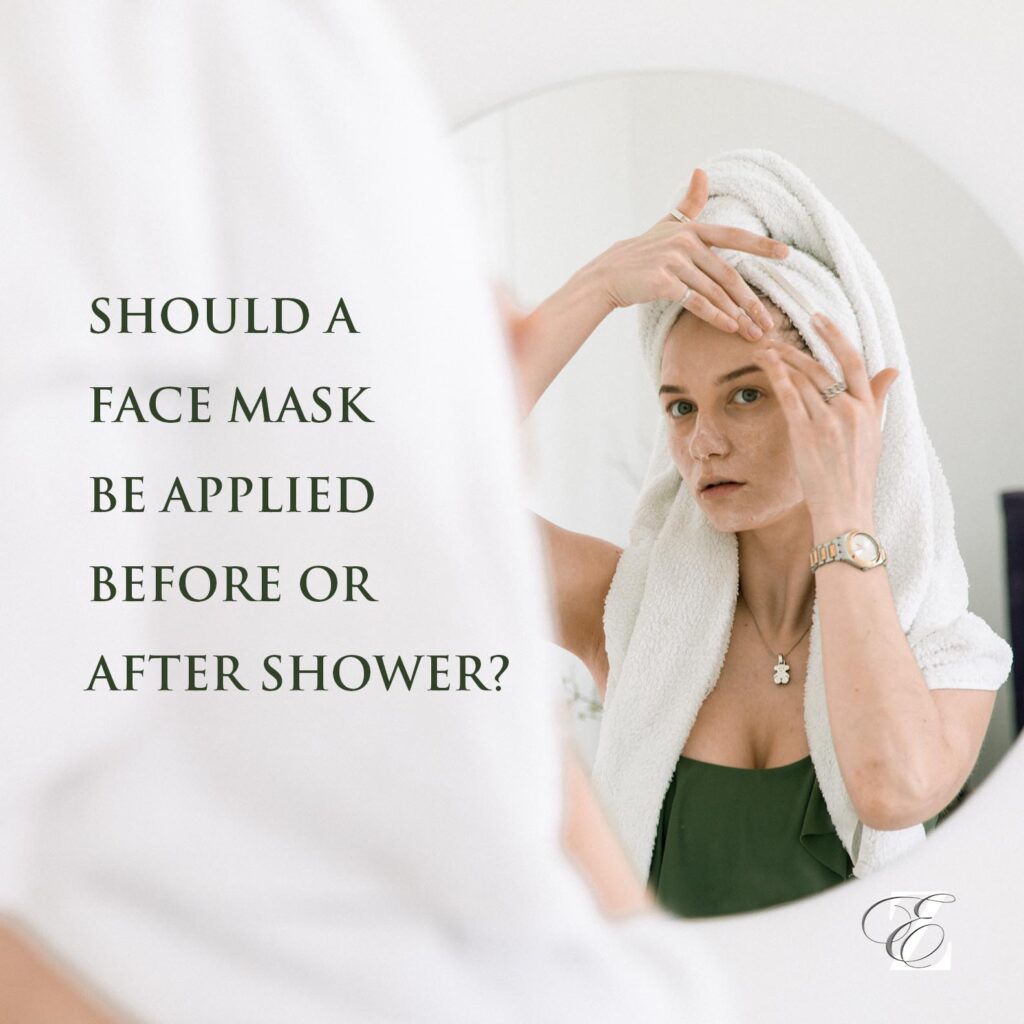
Should I Do a Face Mask Before or After Shower?
It’s a common skincare dilemma: when to indulge in a rejuvenating face mask? Should you cleanse your skin before applying the mask, or should a warm shower be your first step? While both approaches have their merits, the optimal timing for a face mask depends on the specific type of mask and your skin’s needs.
Cleansing or Showering First: What’s the Difference?
Cleansing before a face mask removes dirt, oil, and makeup from the skin’s surface, allowing the mask to penetrate deeply and deliver its active ingredients. This approach is particularly beneficial for clay or charcoal masks that draw out impurities and absorb excess sebum.
Showering before a face mask provides a more thorough cleanse, opening pores and softening the skin, which can enhance the absorption of hydrating or exfoliating masks. The steam from the shower also helps to loosen blackheads and whiteheads, making them easier to remove with a peel-off or deep-cleaning mask.
The Best Timing for Different Mask Types
Clay or Charcoal Masks: Cleanse before applying. These masks need a clean surface to adhere effectively and draw out impurities.
Hydrating Masks: Shower before applying. The steam and warmth help open pores and soften the skin, allowing the mask to penetrate deeply and provide intense hydration.
Exfoliating Masks: Shower before applying. Exfoliating particles can be more effective on softened skin and the steam helps to loosen dead skin cells.
Peel-Off Masks: Cleanse before applying. A clean surface will ensure that the mask adheres properly and effectively removes blackheads and whiteheads.
Tips and Expert Advice
- Consider your skin type. Dry or sensitive skin may benefit from a mask after a shower, while oily or acne-prone skin may prefer a mask before cleansing.
- Follow the mask instructions. Some masks may have specific instructions regarding the timing of application.
- Patch test before applying. Test the mask on a small area of skin before applying it to your entire face to avoid any potential reactions.
- Leave the mask on for the recommended time. Over-masking can irritate the skin.
- Moisturize after removing the mask. This helps to replenish the skin’s natural moisture balance.
FAQ
Q: Does it matter if I apply a face mask on wet or dry skin?
A: It depends on the mask type. Hydrating masks can be applied to wet skin, while clay or exfoliating masks are best applied to dry skin.
Q: Can I use a face mask every day?
A: No, excessive masking can damage the skin. Aim for 1-2 times per week.
Q: Are face masks suitable for all skin types?
A: Yes, but it’s important to choose a mask that’s appropriate for your skin type.
Conclusion
The ideal timing for a face mask depends on the mask type and your skin’s needs. By understanding the differences between cleansing before or showering before, you can maximize the benefits of your mask and achieve a refreshed, glowing complexion.
Are you ready to elevate your skincare routine with the perfect face mask? Share your experiences and preferred mask timing in the comments below!

Image: www.theartofrhinoplasty.com